This list is not “complete.” It is deliberately incomplete and forestalls an important discussion of who “counts” as an artist (see Caveat below). It is meant as a starting point for anyone who is curious about Black artists active in the 19th century and wants to find out more about them.
This list serves as a reminder to me how much more there is to learn and explore. With each of these artists, I have only skimmed the surface, and several are well-researched. And yet, I did not hear about ANY of them until about 3 years ago, and most of them not until this summer, when I went actively looking for 19th-century African-American artists. More often than not, textbooks that survey Western or American art history will not include these artists, or at best mention one work for each, often as a sort of tokenist gesture of inclusivity, in one of those infuriating page insets (“Please notice that we have belatedly realized we are omitting artists of color.”).
These are not even thumbnail sketches–more like teasers, to make you curious. I have included an image for each, and if there is a source mentioned for an artist’s name, you’ll find that citation on the Resource page. Otherwise, Wikipedia might be your best bet as a starting point.
Joshua Johnson, c.1763 – c.1824, portrait painter
We know very little about Johnson (also sometimes spelled Johnston), but he was active as a portrait painter or “limner,” painting members of many wealthy Baltimore families; he was born enslaved, but was freed by his father, a while man, in 1782. Only two of the over 80 portraits attributed to him are portraits of Black men.

Bowdoin College Museum of Art. Image credit: Wikimedia Commons.
Robert Seldon Duncanson, 1821-1872, painter
Duncanson was born a free man in upstate New York, and worked for many years in the Cincinnati area, where he connected with a thriving arts community and clientele. He began to focus on landscape painting, and when the Civil War began, left for Canada and also spent time in the UK, especially in Scotland. Both his more realistic landscapes and his fantasy landscapes were internationally acclaimed. Late in his short life, he developed severe problems with his mental health; he was only 51 when he died. On the connections and contrasts between Duncanson and Edmonia Lewis, see the books by Kirsten Pai Buick and Naurice Frank Woods Jr. in the Resources section.

Image credit: Wikimedia Commons.
Eugène Warburg, 1825-1859, sculptor
This little-known Black sculptor, originally from New Orleans, whose father was of German-Jewish and owned (later freed) his mother, who was of Afro-Caribbean descent. Warburg was born into slavery, freed as a child, and moved to Europe before his untimely death at age 24. Uncle Tiff, a sculpture by him from 1856 based on a character from Harriet Beecher-Stowe’s novel Dred, has recently been rediscovered. Check out this lecture by art historian Paul Kaplan.
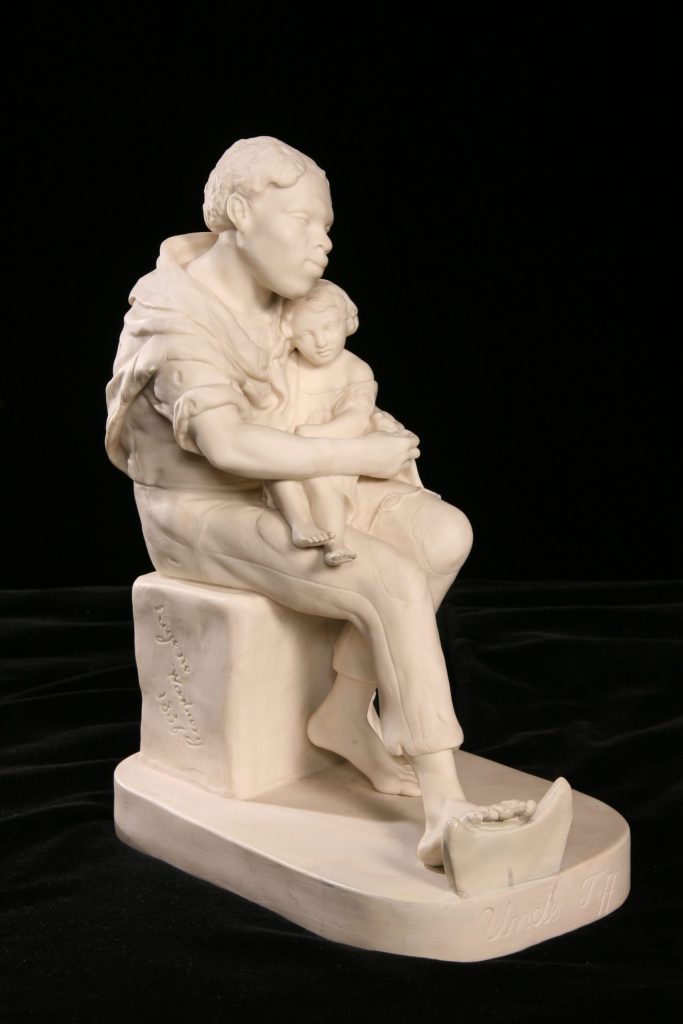
Image credit: Ray Palmer, for the Warburg Institute
Edward Mitchell Bannister, 1828-1901, painter
Bannister, whose father was from Barbados, was born a free man in Canada, spent most of his life in the Boston Area, and was a landscape painter who tended to work in the picturesque rather than the sublime mode–lots of peaceful, agricultural landscapes, as well as some seascapes, and lots of cows! Sometimes known as a tonalist and influenced by the French “Barbizon School” and its style, his late work also often looks Impressionist with its loose brushwork. He was also politically activism for Black rights both before and after the Civil War, and interacted with many of the same white abolitionists as Edmonia Lewis in her days in Boston–their paths very likely crossed, and Edmonia Lewis sold work at a benefit fair that Bannister’s wife, the activist and well-known hairdresser Christiana Carteaux Bannister, ran for Black Union soldiers during the Civil War. On the connections between Bannister, Lewis, and also Robert Duncanson, see the book by Naurice Frank Woods Jr. in the Resources section.
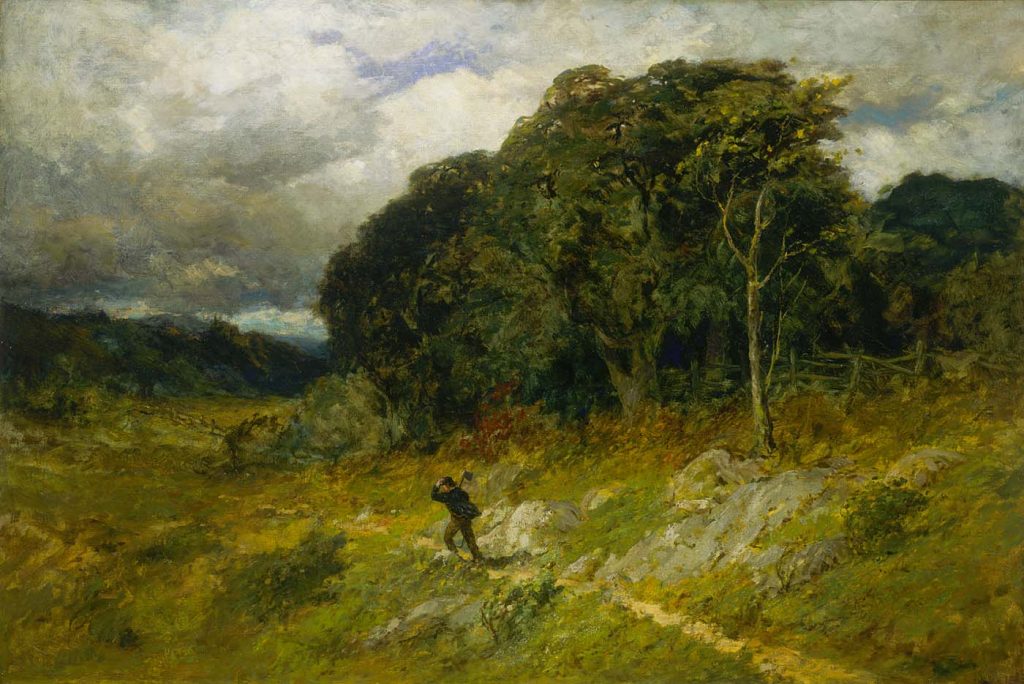
Smithsonian American Art Museum. Image credit: Wikimedia.
Henry Ossawa Tanner, 1859-1937, painter
Tanner, perhaps the most famous of all 19th-century Black artists, was from Pennsylvania and studied at the prestigious Pennsylvania Academy of the Fine Arts in the 1870s. After living in Atlanta during the 1880s, he trained at the famous Académie Julien in Paris and settled in France. While Tanner became most famous for his Impressionist-inflected genre paintings of African-Americans and French peasants, his later career was devoted to paintings with Biblical themes.
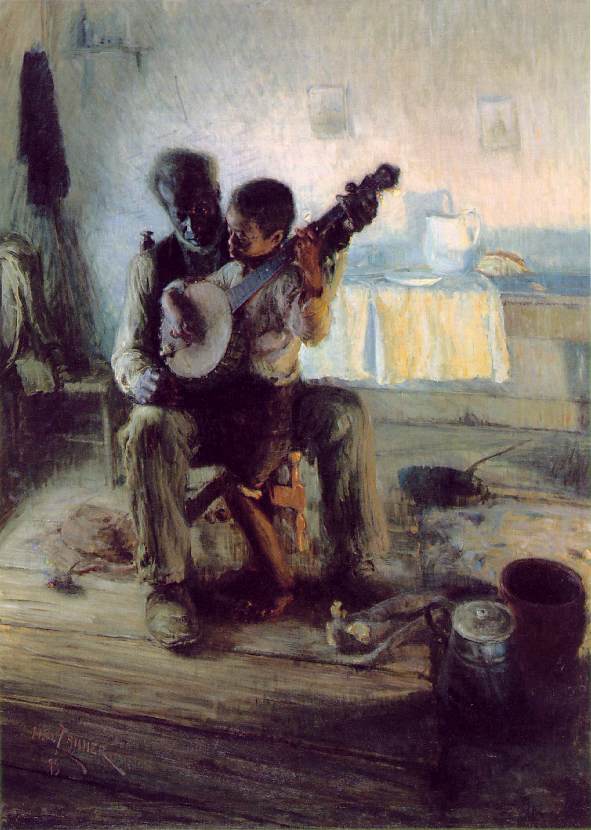
Hampton University Museum. Image credit: Wikimedia Commons.
Edmonia Lewis, c.1844-1907, sculptor
You already have information about her at your fingertips right here!
Annie E. Anderson Walker, 1855-1929, painter
In many ways, Annie Walker is typical of the many forgotten middle-class women artists of the late 19th century–except that being Black meant that the prestigious Corcoran School of Art refused to let her attend. She attended Cooper Union’s art program instead, studied in Paris, and had her pastel La Parisienne accepted to the famous Paris Salon in 1896. But a couple of years after her return to the States, in 1898, she stopped painting altogether. Farrington writes she had a “nervous breakdown”–but women stopped creating art for many reasons: to take care of parents, to raise children, and sometimes simply because getting married was not considered compatible with making art.
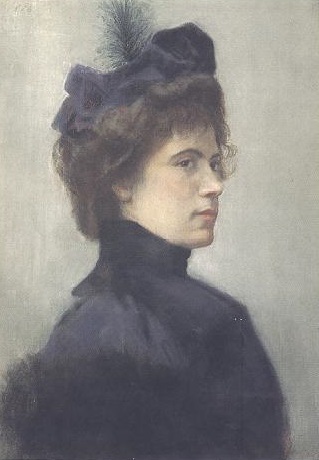
Howard University Collection. Image Credit: Wikimedia Commons
Meta Vaux Warrick Fuller, 1877-1968, sculptor
Fuller, an artist from Philadelphia who went to Paris in 1899 to study art and exhibited her work there by 1901, is included here because her very earliest works date back to the 1890s. Both Farrington and Wilson see her as a direct descendant of Edmonia Lewis, although her style, influenced by Rodin, was quite different. More coming soon on Fuller here!
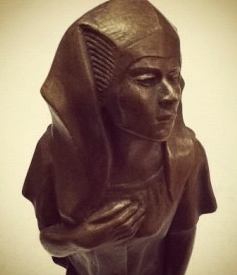
Center for Research in Black Culture, New York Public Library.
Image credit: Wikimedia Commons.
May Howard Jackson, 1877-1931, sculptor
Like Meta Warrick Fuller, Jackson was from Philadelphia, studied at the Pennsylvania Academy and exhibited some of her very earliest work in the 19th century. But most of her work postdates it. Farrington thinks that she picked up on Lewis’s sculptures of children (examples: Asleep and Awake) in her work revolving around mothers, children, and biracial identity–a major theme for the fair-skinned Jackson, who was sometimes misidentified as white and experienced racist exclusion, for example from the Washington Society for the Fine Arts and the National Academy of Design. She taught at Howard University in the 1920s and influenced James Porter, who put African-American art history on the map.
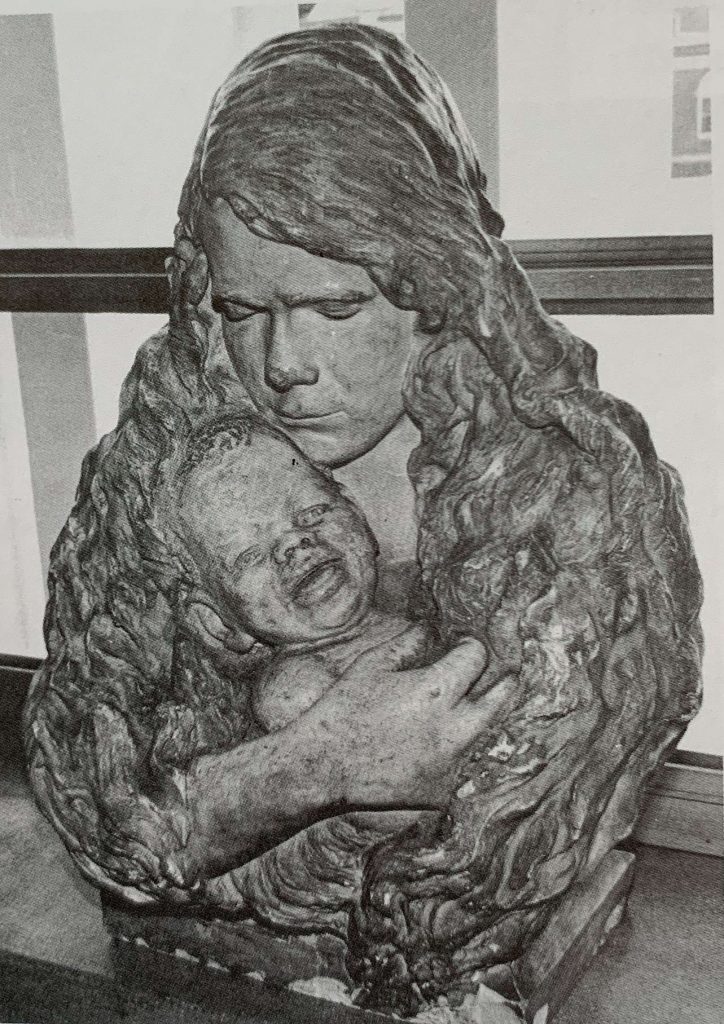
University Archives, Virginia State University.
Image credit: Farrington, p.72
The Caveat
This list also needs a very important caveat. These are the names of professional, trained artists, the very few men and even fewer women who sold what was traditionally considered “high art,” paintings and sculptures especially. In other words, it’s “canon-adjacent” and therefore already problematic. It could even replicate the idea that we need to just expand the canon or make a new one, rather than questioning the whole idea of “the canon.”
So let me acknowledge who is missing: Black people who had learned a craft (dressmaking or cabinetry, for example) and were hired to make beautiful objects, and everyone who made beautiful things for themselves (what we would now call amateurs or hobbyists, but that’s a problematic term in itself, especially when it comes to making everything from household goods to spiritually significant objects). Both enslaved and free African-Americans made quilts or carved figurines, and created objects for their homes, gardens, or (very importantly) cemeteries. Most of this work is lost, and even where some of it survives, there are basically no traces of the artists, especially for the time before the Civil War.
Here are a very few whose names we know: the cabinetmakers Thomas Day and Dutrevil Barjon, who were active in the 1820s (see Driskell, 11-58), and Harriet Powers (1837-1911), one of the very few Black quilters known by name, as well as the dressmaker Elizabeth Hobbs Keckley (1818-1907), who famously became Mary Todd’s Lincoln’s dressmaker (see Farrington, 38-44). I have also omitted Sarah Mapps Douglass (1806-1882), an abolition activist and writer who was also an accomplished water colorist and produced some of the earliest signed paintings by any Black women–but she did not sell these; they were part of a friendship album, the kind of object where scholars now often look for the traces of the many female amateur artists who were quite accomplished, but never expected to produce art professionally.
Even when it comes to engravers, who were perhaps seen as more directly engaged in creating “art,” we have almost no information on Black people who learned this craft: Phillis Wheatley, the famous 18th-century Black poet, wrote about an enslaved engraver, but all we know is his name, Scipio Moorhead; Patrick Reason (1816-1898), who famously engraved of a version of a female Kneeling Slave in 1835 mentioned in the post on Forever Free and was active in the abolitionist movement, is one of the few African-American engravers who is known to have owned his own shop (in New York City). —Note: There are undoubtedly more engravers later in the century, with the rise of the Black periodical press, but I have not researched this topic yet!
Your Turn:
Was this important information to have? Did it make you curious about any particular artist? Are you going to go look them up?
You may have read through this page and looked at these images and thought: I know about this! Why is this presented like it’s new material? If that’s the case, how did that happen? Where did you learn? How and where can others find out about these artists earlier?
You may have read through this page and thought: I didn’t know about these artists. If that’s the case, why do you think they were not on your radar (just like they were not on mine)? How and where could you have found out about these earlier? Think about the artists of color (or writers, or composers, etc.) you know about. What would it take to spread the word on these artists?